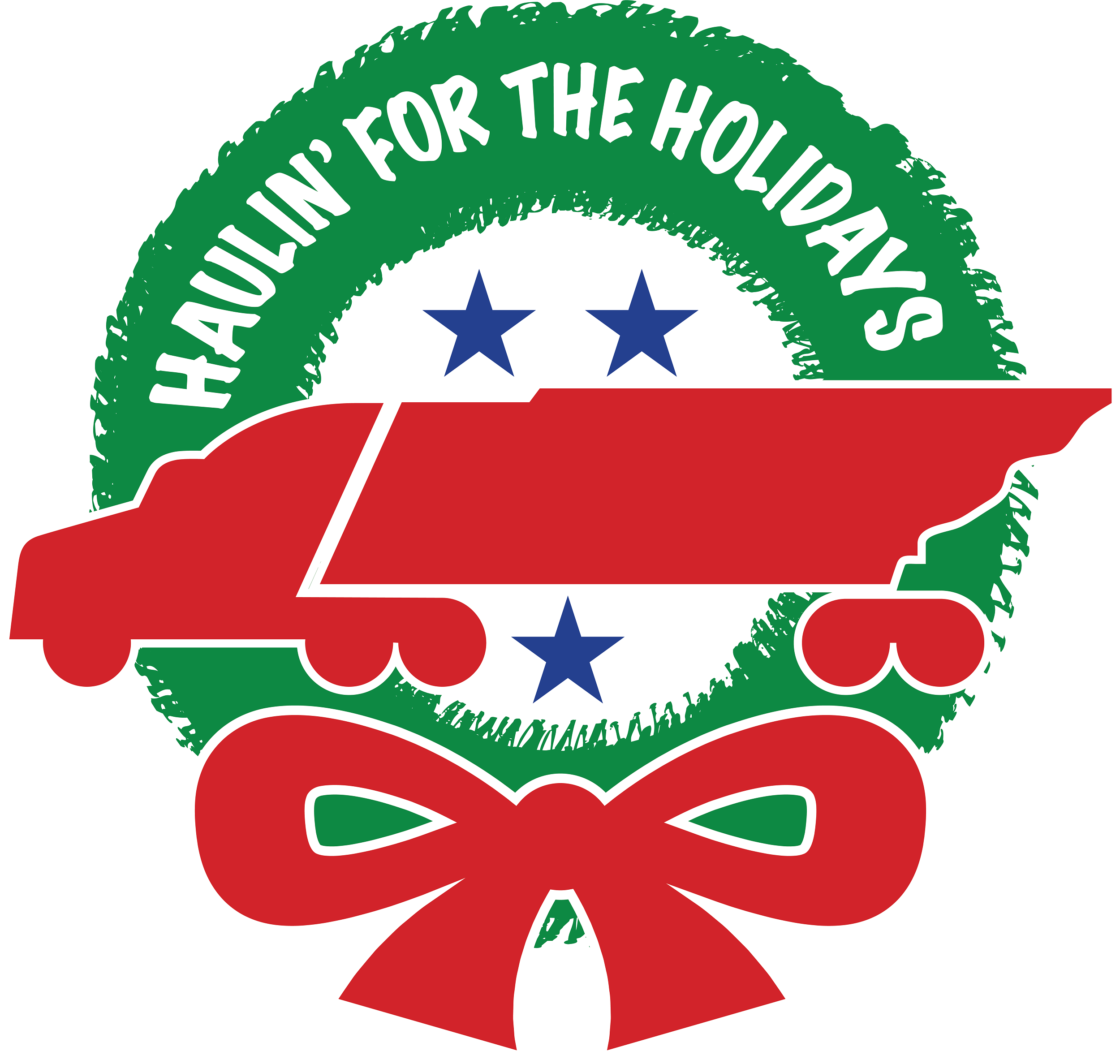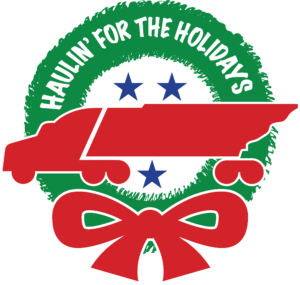
 Please join us for our first YPC meeting on Feb 2, 2023 at Diskin Cider.
Please join us for our first YPC meeting on Feb 2, 2023 at Diskin Cider.
Author: admin

 Please join us for our first YPC meeting on Feb 2, 2023 at Diskin Cider.
Please join us for our first YPC meeting on Feb 2, 2023 at Diskin Cider.
|
||||
|
||||
|
||||
|


HAULIN’ FOR THE HOLIDAYS
Haulin’ for the Holidays is a state-wide initiative by the Tennessee Trucking Association and its Young Professional Council to partner with TTA members and local charities to make holidays brighter for Tennessee children, teens and families. We’re thrilled to be partnering with a wide range of organizations and charities to make a real difference for Tennessee families. Click HERE to view more information.
The American Transportation Research Institute recently released comprehensive research that confirms that large verdicts against trucking fleets are increasing dramatically, both in number and in size of awards. ATRI’s research is partially based on a newly created trucking litigation database that provides detailed information on 600 cases between 2006 and 2019. In the first five years of the data, there were 26 cases over $1 million, and in the last five years of the data, there were nearly 300 cases. The number of verdicts over $10 million nearly doubled in that time.
In response to arguments that nuclear verdicts reflect real-world cost increases, the research documents that from 2010 to 2018, the size of verdict awards grew 51.7 percent annually at the same time that standard inflation grew 1.7 percent annually and healthcare costs grew 2.9 percent annually.
The research also surveyed and interviewed dozens of defense and plaintiff attorneys as well as insurance and motor carrier experts, and generated a qualitative analysis for why the litigation landscape has changed, recommendations for modifying pre-trial preparations, litigation strategies and mediation approaches, and how large verdict awards impact both safety and insurance.
At 80+ pages, ATRI’s report is a data-rich analysis with important findings that motor carriers, their defense attorneys and their insurers can implement to mitigate the frequency and size of large verdicts.
Pre-Crash Actions by Motor Carriers are Critical
• Both attorney bars emphasized that crash avoidance is everything and that strictly adhering to safety and operational policies is essential to staying out of court and/or reducing award sizes.
• Almost any failure to adhere to Federal Motor Carrier Safety Regulations (FMCSRs) or company safety policies will be the focus of plaintiff arguments.
• From a litigation standpoint, motor carriers should consider FMCSRs as minimum standards that can and should be exceeded. The ability of defense attorneys to document carrier or driver safety activities that exceed FMCSRs carries great weight with juries.
Litigation Preparation is – and should be – Both Complex and Costly
• Risk Assessments must be thorough and objective. Case vulnerabilities and potential liabilities must be acknowledged, and vetted against realistic financial damage projections.
• The ultimate strategy-driving question internally posed by most plaintiff attorneys and successful defense attorneys is: “what operational, safety or training factors could have prevented the crash in the first place?”
• Experience matters. Both defense and plaintiff attorney bars noted that attorneys inexperienced in trucking litigation are harmful to all parties.
When Mediation and Settling Makes Sense
• There was general agreement that mediation and settlements are missed opportunities, particularly by the defense when they do not believe that negligence by the carrier and/or driver exists.
• If mediation and settlements are pursued, initial offers should be realistic and equitable. Multiple plaintiff attorneys describe the frustration and consequence of initial “low-ball”
The 111th Tennessee General Assembly adjourned sine die just after 3 a.m. on June 19th with
agreements on the budget, but the two chambers failed to come to terms on major legislative initiatives
such as COVID-19 protection for businesses, certificate of need legislation, and telemedicine. This
month’s adjournment lacked much of the pomp and circumstance typically associated with sine die,
perhaps a fitting end to a session that began with a new Governor and a considerable amount of new
members, and would ultimately experience two different House Speakers, a tornado, a pandemic, three
separate budgets in two years, and an uncharacteristic level of sparring between the two chambers
regarding both the scope of legislation to be deliberated and — in several cases — the content of that
legislation. Lawmakers also grappled with an unprecedented budget situation and frequent protests.
Gone was much of Governor Bill Lee’s once-ambitious legislative agenda, voluntarily shelved by the
Governor in the interest of focusing on managing a budget situation that was greatly affected by the
pandemic. In the end, legislators passed a $39.5 billion budget that barely resembled the one that the
Governor proposed to the General Assembly during his State of the State Address in early February.
Both the budget and the legislative process were greatly impacted by COVID-19, especially since the
Legislature recessed from March 18 to June 1 to stay at home for the pandemic.
Taken as a whole, the final budget largely addresses a $500 billion shortfall in the current year budget
and a $1 billion deficit in the budget that begins on July. Highlights include a $25 million sales tax
holiday, $210.5 million for cities and counties (including raising the cap on the amount allocated to
Memphis and Nashville to $10 million each), and $100 million to the rainy day fund. The budget
eliminates the pay raises for teachers, state employees, and higher education that had been previously
promised. Originally, the fund for cities and counties was set at $100 million and reserved for a one-time
expense relative to capital maintenance, utility upgrades, public safety projects, or road projects.
However, given the pandemic and storms that hit the state, cities and counties will be given flexibility on
the use of the funds. The final budget managed to preserve most of Governor Lee’s reductions, and
critical items emerged unscathed, including commitments to fully fund the Basic Education Program
(BEP), Pensions & Health Insurance, debt service requirements.
This month, the General Assembly passed legislation (SB2667/HB2842) to allow the Tennessee Trucking
Association Foundation to hold its annual raffle in December which benefits numerous charities and
educational programs. Additionally, the General Assembly passed the Tennessee Trucking Association’s
bill (SB1608/HB1594) dealing the drop deck length distance from the king pin to rear of the trailer, a
measure that expands, from 50 to 52 feet from the point of attachment to the tractor, the length a
truck-tractor and semitrailer or trailer combination that may operate over the federal and state highway
system in Tennessee.
Now that the General Assembly’s flag has been lowered from the Capitol cupola, thus
signaling adjournment, legislators’ attention turns toward re-election — with all House seats and half of
the Senate seats on the slate for the August primaries and November general election. Lawmakers will
now return to their districts, begin fundraising – something they are prohibited from doing while
legislature is in session — and immediately prepare for the August 6 primaries, with only one month
remaining until early voting begins.
On behalf of the Tennessee Government Relations Team at Adams and Reese, it is an honor and a
privilege to serve you before the Tennessee General Assembly, and we wish you and yours good health
and a relaxing summer. As always, please do not hesitate to contact us if we can further serve you in
any way.

FOR IMMEDIATE RELEASE Contact: Deanna Phelps, Vice President
931-680-3165 | DeannaPhelps@biggexpress.com
BIG G EXPRESS MORE THAN DOUBLES FUNDRAISING GOAL
WITH MOTORCYCLE RIDE BENEFITING ST. JUDE’S
June 3, 2020 (Shelbyville, Tenn.) —The fifth annual Big G Motorcycle Ride benefiting St. Jude Children’s Research Hospital was a roaring success with the Shelbyville-based carrier’s riders and supporters raising $25,000, which was $15,000 more than their goal this year.
Starting in Mt. Juliet, Tenn., kickstands went up at 9:00 a.m. Saturday, May 30, sending the 148 registered motorcycle riders approximately 75 miles to Monteagle, Tenn. where the fundraiser auction was held at Jim Oliver’s Smokehouse Restaurant.
The weather and atmosphere were ideal according to Big G Manager of Driver Recruiting and Driver Services Karla Butler who said, “Everyone should do this! Put it on your bucket list! It was very powerful – the roar of the motorcycles. Everyone came together as a family.”
Big G’s Vice President Deanna Phelps stated, “It was like a big family reunion. Everyone was relaxed and happy to support the kids at St Jude’s… absolutely wonderful day!”
All proceeds go to St. Jude Children’s Research Hospital to help it continue to lead the way in how the world understands, treats, and defeats childhood cancer and other life-threatening diseases.
Big G professional driver and fundraiser organizer Tim Chelette, was overwhelmed by the turnout and donations. “If you were there, you know you really enjoyed your ride! We had a blast. It was awesome to see you all coming in, showing up and showing out… Last year we raised $14,628, this year it was $25,000! Can you believe that?” said Chelette. “You brought your money, you brought your time, and donated to a great cause. St. Jude Children’s Hospital really does appreciate it, I do and Big G really does appreciate it. We can’t do this without you.”
Chelette stated via Facebook that the date for next year’s ride will be announced in October or November.
About Big G Express, Inc:
Founded in 1995, the Big G Express Family of Companies include Big G Express, Big G Logistics, Big G Warehousing and Ike Transportation. The company is headquartered in Shelbyville, Tenn., and is 100% employee owned. The companies provide general commodity, irregular route, dry van truck load, flatbed, logistics and warehousing services to customers nationwide.
WASHINGTON – The U.S. Department of Transportation’s Federal Motor Carrier Safety Administration (FMCSA) today published a final rule updating hours of service (HOS) rules to increase safety on America’s roadways by updating existing regulations for commercial motor vehicle (CMV) drivers.
“America’s truckers are doing a heroic job keeping our supply chains open during this unprecedented time and these rules will provide them greater flexibility to keep America moving,” said U.S. Transportation Secretary Elaine L. Chao.
“The Department of Transportation and the Trump Administration listened directly to the concerns of truckers seeking rules that are safer and have more flexibility—and we have acted. These updated hours of service rules are based on the thousands of comments we received from the American people. These reforms will improve safety on America’s roadways and strengthen the nation’s motor carrier industry,” said FMCSA Acting Administrator Jim Mullen.
First adopted in 1937, FMCSA’s hours of service rules specify the permitted operating hours of commercial drivers. In 2018, FMCSA authored an Advanced Notice of Proposed Rulemaking (ANPRM) to receive public comment on portions of the HOS rules to alleviate unnecessary burdens placed on drivers while maintaining safety on our nation’s highways and roads. Subsequently, in August 2019, the Agency published a detailed proposed rule which received an additional 2,800 public comments.
Based on the detailed public comments and input from the American people, FMCSA’s final rule on hours of service offers four key revisions to the existing HOS rules:
FMCSA’s final rule is crafted to improve safety on the nation’s roadways. The rule changes do not increase driving time and will continue to prevent CMV operators from driving for more than eight consecutive hours without at least a 30-minute break.
In addition, FMCSA’s rule modernizing hours of service regulations is estimated to provide nearly $274 million in annualized cost savings for the U.S. economy and American consumers. The trucking industry is a key component of the national economy, employing more than seven million people and moving 70 percent of the nation’s domestic freight.
The new hours of service rule will have an implementation date of 120 days after publication in the Federal Register.
The complete final rule is available here: https://www.fmcsa.dot.gov/regulations/hours-service/hours-service-drivers-final-rule
The FMCSA announces the start of the Crash Preventability Determination Program (CPDP). Under this program, if you have an eligible crash that occurred on or after August 1, 2019, you may submit a Request for Data Review (RDR) with the required police accident report and other supporting documents, photos, or videos through the Agency’s DataQswebsite.
On July 27, 2017, FMCSA announced a Crash Preventability Demonstration Program to evaluate the preventability of eight categories of crashes through submissions of Requests for Data Review to its national data correction system known as DataQs. On August 5, 2019, based on experiences with the demonstration program, FMCSA proposed a new CPDP with a streamlined process. Based on comments received in response to the August 2019 proposal, FMCSA established the CPDP which will expand the types of eligible crashes, modify the Safety Measurement System to exclude crashes with not preventable determinations from the prioritization algorithm and note the not preventable determinations in the Pre-Employment Screening Program.
The following crash types are eligible for participation in the program:
Struck in the Rear type of crash when the CMV was struck:
Wrong Direction or Illegal Turns type of crash when the CMV was struck:
Parked or Legally Stopped type of crash when the CMV was struck:
Failure of the other vehicle to Stop type of crash when the CMV was struck:
Under the Influence type of crash when the CMV was struck:
Medical Issues, Falling Asleep or Distracted Driving type of crash when the CMV was struck:
Cargo/Equipment/Debris or Infrastructure Failure type of crash when the CMV:
Animal Strike type of crash when the CMV:
Suicide type of crash when the CMV:
Rare or Unusual type of crash when the CMV:
For more information on the Crash Preventability Determination Program, please visit:
For information on the previous Demonstration Program, please visit:
On Monday, March 30th, citing the growth of the coronavirus in Tennessee’s urban areas and his concern about the disease’s potential impact on rural areas, Governor Lee announced the issuance of a statewide “safer at home” order. The statewide decree actually is comprised of two separate Executive Orders, which take effect at 11:59 p.m. on Tuesday and last through April 14.
adds businesses such as barber shops, hair salons, tattoo shops and entertainment and recreational venues to the list of business that were closed by the Governor last week in
, and extends that Order.
lists the types of businesses that the Governor deems “essential,” and urges residents to stay at home as much as possible. As always, it is a pleasure to represent you before the Tennessee General Assembly. Please stay safe and healthy and call on us if you need anything.
The coronavirus pandemic is affecting small businesses in a variety of ways. From loss of business to remote work, things are changing fast during the COVID-19 outbreak and businesses are being forced to adapt. CO— is working to bring you the best resources and information to help you navigate this challenging time.
Summary of Changes to the Guidance:
Below are changes as of March 21, 2020
When we issued the self-quarantining guidance for greater New York City residents leaving this area, it was out of an abundance of caution to help protect U.S. areas with lower levels of COVID-19 spread. In line with our recommendations for other essential critical infrastructure workers, this guidance does not apply to critical transportation and delivery workers who are desperately needed for New York residents to continue their daily lives and respond to the COVID-19 outbreak.
Truck drivers and other people driving into the city to deliver needed supplies should stay in their vehicles as much as possible as supplies are loaded and unloaded, avoid being within 6 feet of others as much as possible when they exit their vehicles, and move to electronic receipts if possible. If these drivers need to spend the night in the greater New York City area, they should stay in their hotel rooms or sleeper cab, when available, to the extent possible and continue to practice social distancing. Drivers who take these precautions should not need to self-quarantine when they leave the greater New York area, unless self-quarantine is recommended by state or local officials for all residents in the areas where they live.